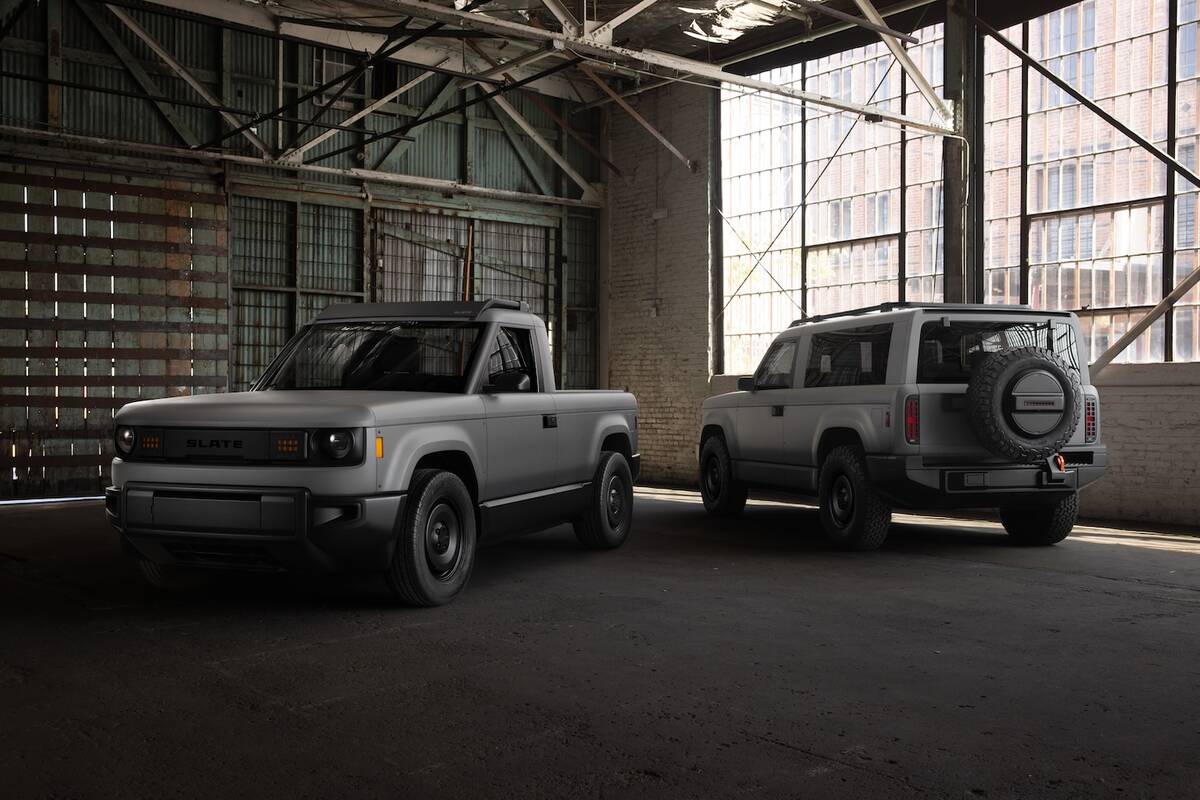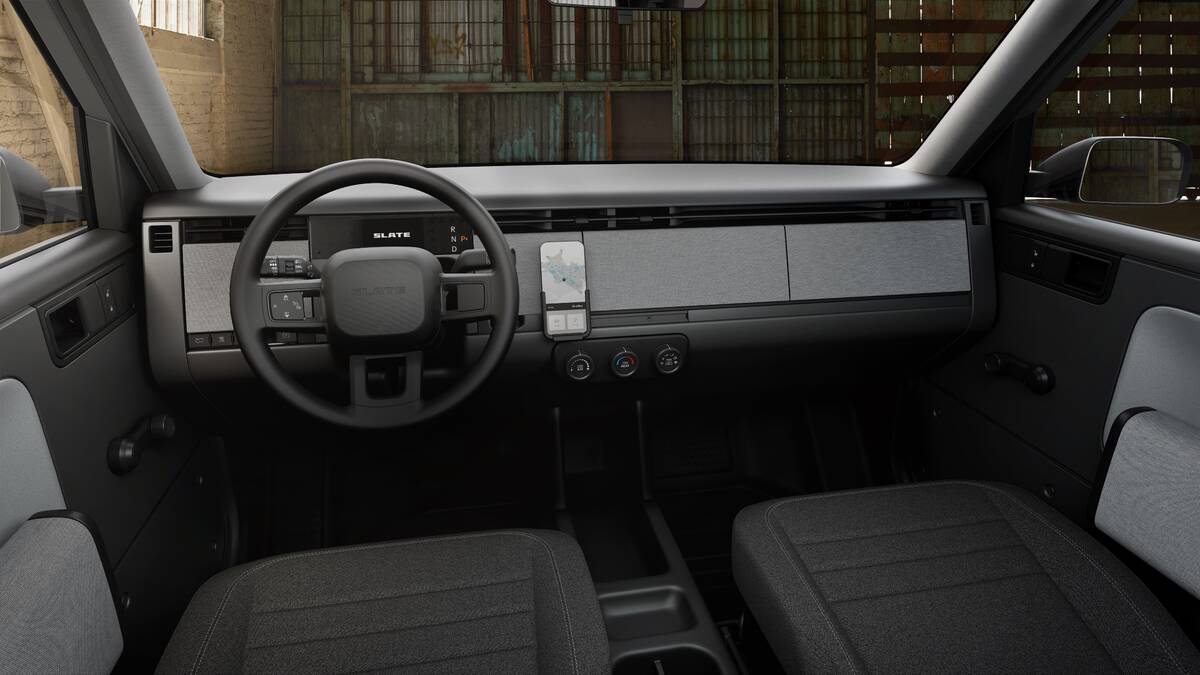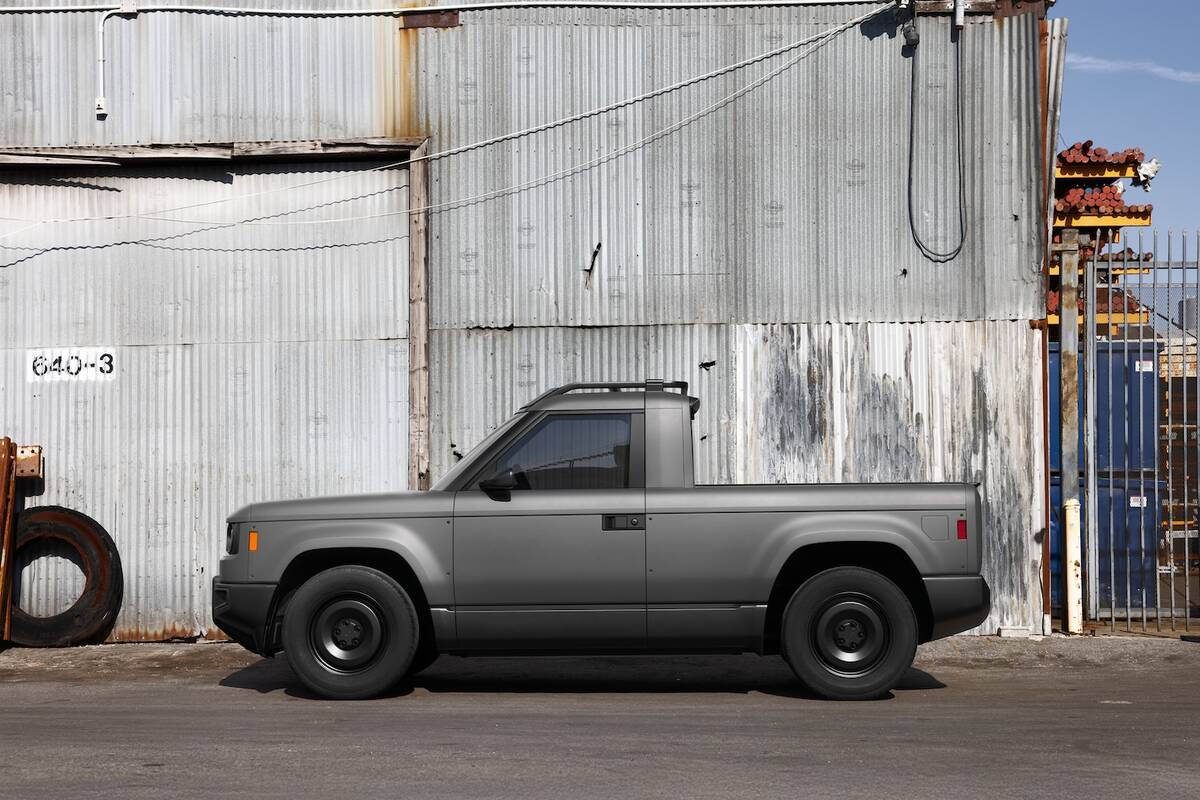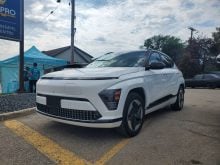It seems if you’re one of the richest men in the world, your interests go to building rockets and electric vehicles. In late April, Amazon founder Jeff Bezos mimicked his rocket-building competitor Elon Musk by starting up his own electric vehicle company. It’s called Slate.
This company, though, has a very different approach than Tesla to building vehicles. To start with, it’s only building one model — but it can be either a small pickup or SUV. Converting it from one to the other is, believe it or not, a do-it-yourself project, which also sets it apart from other manufacturers.
And that’s not the only DIY aspect: adding accessories, or a vinyl wrap to make it something other than the bland grey colour in which all trucks arrive, are also options. Slate is going to offer custom-cut wraps that buyers can apply without removing any body hardware.
Read Also

Claas brings 1000 Series SP forage harvesters to Canada
In mid-August, Claas unveiled its new line of Jaguar forage harvesters at an event in Visalia, California, deep in the heart of that state’s dairy region.
The truck’s size is reminiscent of the early Japanese mini-pickups that first began arriving here en masse in the 1970s. It has a 1,400-lb. payload and 1,000-lb. tow rating. Those ratings are pretty typical of today’s off-road side-by-side UTVs that have become popular but aren’t road-legal.

In the last few years, many voices have called for the introduction of small on-road vehicles such as this in North America. In response, a few of the very small grey-market Asian mini-trucks have made their way here. The major automakers have introduced smaller pickups, such as Ford’s Maverick, which still have a healthy price tag. But it’s the low-cost, basic, plain-Jane features and design — and, of course, full electric drive — that set the Slate apart from anything else out there.
But before you get too excited, the Slate is so far only going to be available inside the U.S.; Canadians are out of luck, for the time being at least.
The Slate will be marketed just like Bezos’ Amazon direct-delivery model for books and other goods: no dealerships. Order it online and wait for it to show up.
As for specifications, the Slate’s estimated range is 150 miles (240 km). A larger battery pack option will push that to 240 miles. But those estimates are based on initial test results. There are no official U.S. EPA ratings for it yet. Battery voltage feeds to a single rear motor, rated at 150 kW. So it’s just a rear-wheel drive.
There are no fancy Bluetooth or infotainment screens. Slate engineers clearly felt you already have a smartphone, which can do all the things any fancy built-in audio system can do. So why pay for something you already have? That philosophy makes good sense, actually.

The announcement introducing the Slate, however, appears to be well ahead of any actual production. The company says buyers can now put up a $50 deposit to reserve a vehicle, but there is no firm date for when a Slate will arrive in anyone’s driveway.
A press release from the brand says manufacturing will take place in the U.S. Midwest, but the firm later confirmed to business media it had settled on a location at Warsaw, Ind., about 200 km north of Indianapolis.
Estimated retail price will be US$27,000. If the Slate were to be exported to Canada, a dollar conversion rate (at time of writing) would put that at around C$34,400. A 25 per cent retaliatory tariff would bump it up to about C$43,000.
Nevertheless, my bet is this little vehicle will be popular in the U.S. market, and when the tariff problem with the U.S. is settled, it could still be available at an attractive price point in Canada, not much different than an off-road UTV. But it would have the advantage of being road-legal and designed for highway travel.
We’ll have to wait and see if Bezos brings the Slate across the border, or launches one into space like Musk did with a Tesla.
















